As we are spending our long corona summer in Slano, Southern Dalmatia, we are making the most of our time by visiting less known villages and sites in the surroundings. One of our favorite regions is the peninsula of Pelješac that extends into the Adriatic Sea, reaching out to touch the island of Korčula.
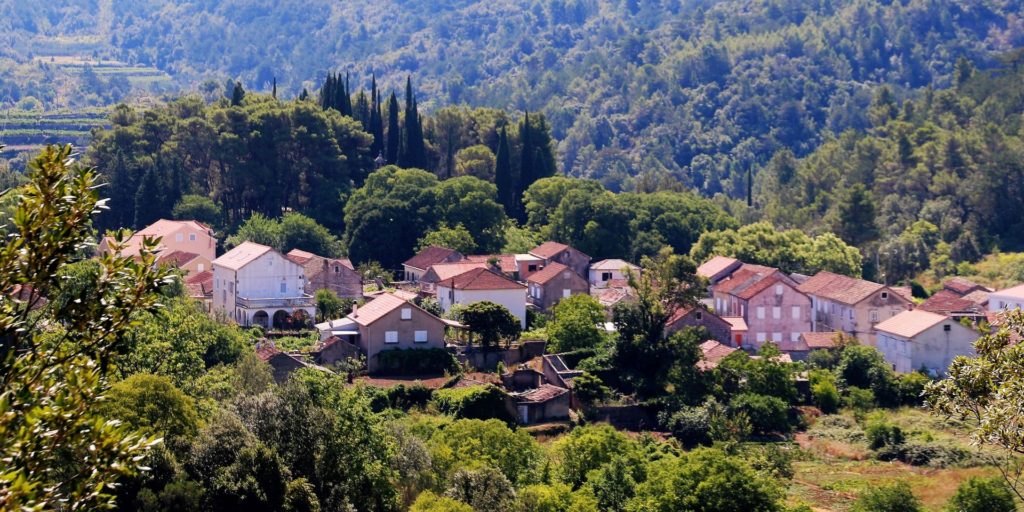 Pelješac usually doesn’t attract many foreign tourists, although it is small enough to cover by car in one day (its length is 70 km only). Just imagine how quiet the peninsula has been during this summer, as many foreign tourists have decided to follow the recommendations of their governments and spend their holidays at home.
Pelješac usually doesn’t attract many foreign tourists, although it is small enough to cover by car in one day (its length is 70 km only). Just imagine how quiet the peninsula has been during this summer, as many foreign tourists have decided to follow the recommendations of their governments and spend their holidays at home.
Pelješac Peninsula is connected with the mainland by the historical town of Ston. We had often visited this place before: the salt flats, the well-preserved city walls (originally more than 7 km long) and the delicious oysters are a must for all who pass by.
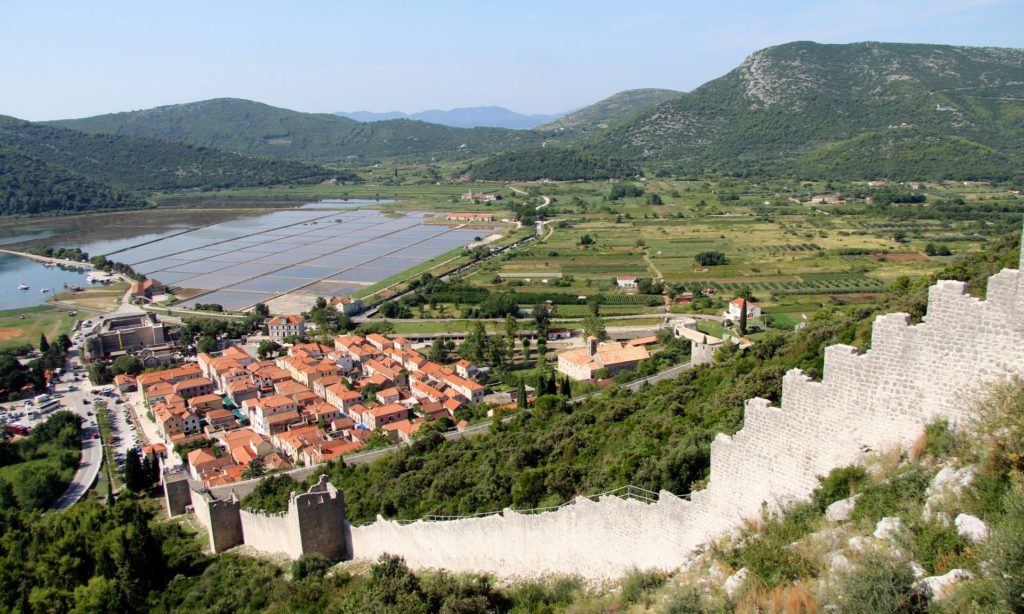 As our campsite – Camp Rogač – is only 20 km away from Ston, we have had the opportunity to crisscross Pelješac several times this summer, exploring tiny fishermen’s villages, picturesque hamlets nestled in the hillsides and secluded bays with emerald blue water. We have followed narrow winding roads along steep cliffs, happy that there was hardly any traffic… and we were struck by the fantastic views.
As our campsite – Camp Rogač – is only 20 km away from Ston, we have had the opportunity to crisscross Pelješac several times this summer, exploring tiny fishermen’s villages, picturesque hamlets nestled in the hillsides and secluded bays with emerald blue water. We have followed narrow winding roads along steep cliffs, happy that there was hardly any traffic… and we were struck by the fantastic views.
The main road that runs from Ston to Orebić, a tourist resort at the end of the peninsula, offers splendid landscapes and vistas. Barren rocks, Mediterranean vegetation with tall cypresses, olive groves and endless vineyards give you a sense of timelessness.
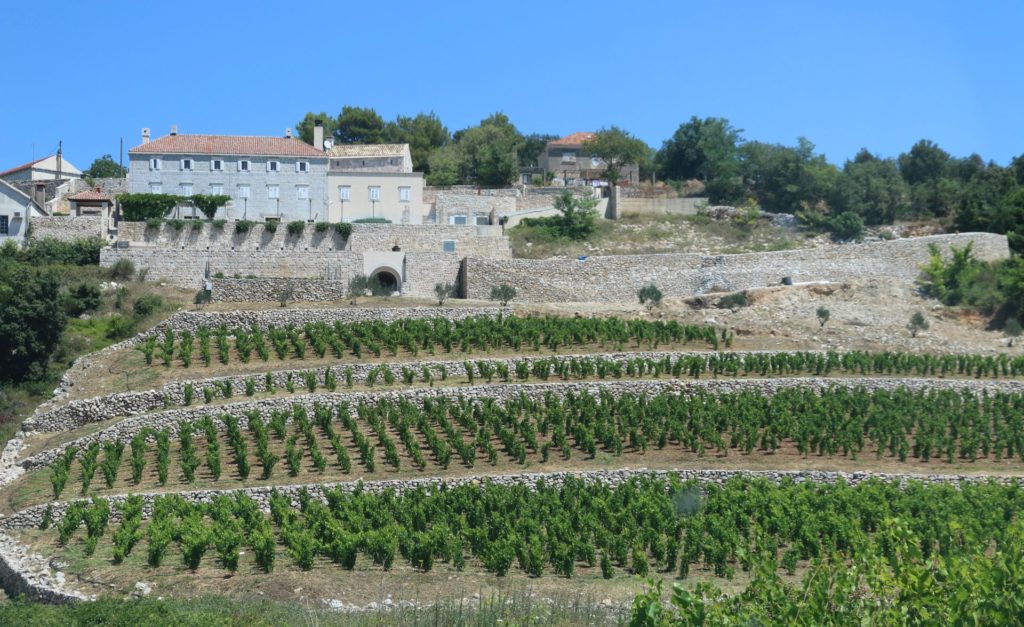 But times are changing. We also saw the construction works for the new Pelješac bridge, which will connect the Croatian mainland with Pelješac, thus circumventing any border crossings with neighboring Bosnia & Herzegovina. It is planned to be finished in 2022, together with the access roads. Will the quiet charm of the peninsula get lost? I hope not.
But times are changing. We also saw the construction works for the new Pelješac bridge, which will connect the Croatian mainland with Pelješac, thus circumventing any border crossings with neighboring Bosnia & Herzegovina. It is planned to be finished in 2022, together with the access roads. Will the quiet charm of the peninsula get lost? I hope not.
Pelješac is famous for its wines and there are many wine shops and wineries along the road. The best-known high-quality wines are Dingač, Plavac and Postup.
As I have already written a blog post about Ston, I would like to describe three trips through Pelješac „off the beaten track“, although I know that there is much more to discover on this peninsula.
- The Southern Coast
 We made a beautiful tour along the southern coast of Pelješac by turning left from the main road at Dubrava and taking a secondary road to the village of Žuljana. This village with 200 inhabitants is an oasis of tranquility with nice seaside architecture and a beautiful sandy beach. Behind the harbour is a shady pine forest where you can relax on the rocks above the crystal clear water.
We made a beautiful tour along the southern coast of Pelješac by turning left from the main road at Dubrava and taking a secondary road to the village of Žuljana. This village with 200 inhabitants is an oasis of tranquility with nice seaside architecture and a beautiful sandy beach. Behind the harbour is a shady pine forest where you can relax on the rocks above the crystal clear water.
From Žuljana we took the local road to Trstenik, enjoying magnificent views of the coast line. This beautiful village is located in a deep bay, at the foot of tall hills. Everywhere around we could still see the traces of huge forest fires that struck the region in 2015.
In the 19th century and the beginning of the 20th century, Trstenik was an important harbour. At that time, the only way to transport grapes from the southern part of Pelješac was to load them on donkeys and carry them over the 400 m high pass of the mountain to the wineries in Potomje or along the steep southern ridges to the bay of Trstenik to be loaded on boats and transported overseas.
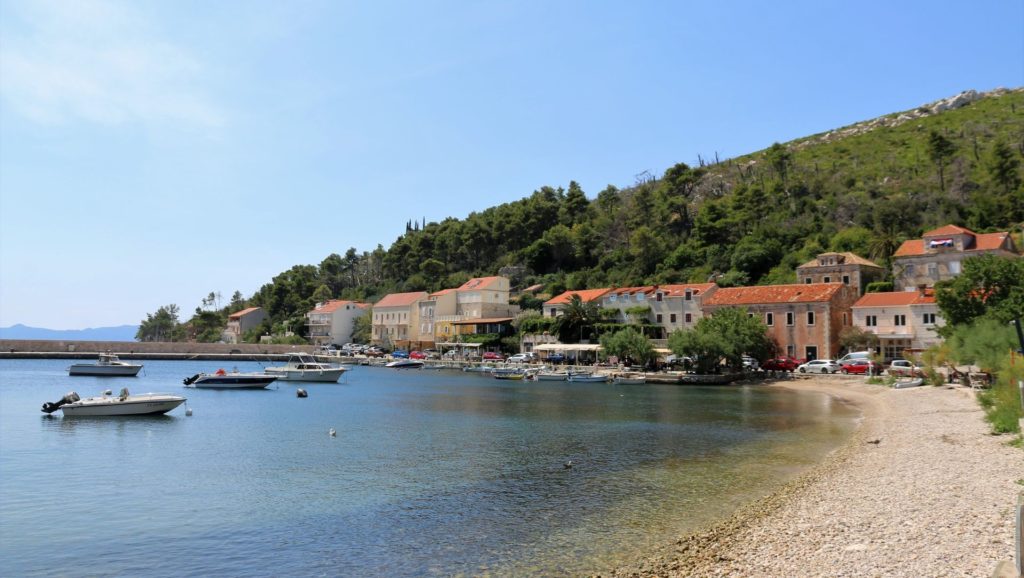 According to our preferred online map (www.opentopomap.org), we expected to find a narrow rural road that would run uphill behind Trstenik, passing the top of the hill, to the famous wine area of Dingač. And yes, this appeared to be a wonderful tour.
According to our preferred online map (www.opentopomap.org), we expected to find a narrow rural road that would run uphill behind Trstenik, passing the top of the hill, to the famous wine area of Dingač. And yes, this appeared to be a wonderful tour.
Can you imagine a narrow, 3 km long road, winding along the steep, precipitous southern slopes of Pelješac, which are covered by vineyards as far as the eye can see? The vines were even covering the road surface and from above we enjoyed breathtaking vistas of the village of Borak and the transparent blue sea. What a magnificent region!
Finally, we passed through the 400 m long Dingač tunnel, an old one-lane tunnel through the mountain that ends in the ancient village of Potomje.
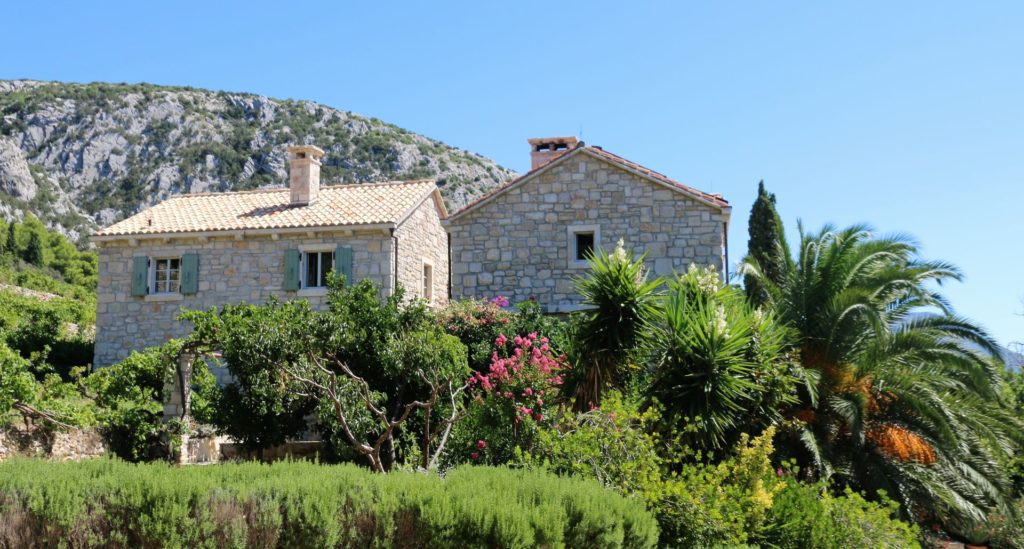 Winemakers paid to build this tunnel in 1973 in order to transport grapes directly to Potomje, the centre of the wine-growing areas of Dingač, Plavac and Postup wines, which have been produced here for centuries.
Winemakers paid to build this tunnel in 1973 in order to transport grapes directly to Potomje, the centre of the wine-growing areas of Dingač, Plavac and Postup wines, which have been produced here for centuries.
The village of Podobuče could be visited from the other side only: we first followed the main road from Potomje to Postup, where we turned left and after 8 km we reached this small fishing hamlet with its quiet, clean bay, surrounded by romantic stone houses, vineyards and abundant Mediterranean vegetation.
- The Northern Coast
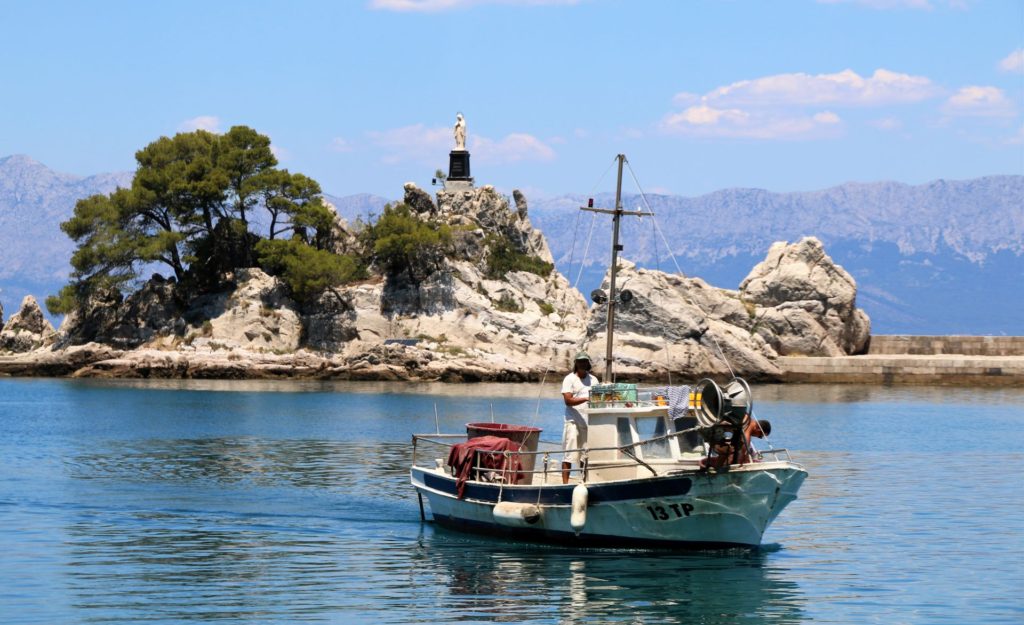 Leaving the main road at Pijavičina, we turned right and soon we arrived in Kuna Pelješka, a village at an altitude of 400 m above sea level. This village is well-known for its wine production and agriculture, but we also found an 18th-century Fransiscan monastery and the church of Our Lady of Loreta – one of the largest churches on Pelješac. The family run donkey farm and tavern Antunović is a very popular tourist attraction, but unfortunately, there was not a soul in sight when we passed by.
Leaving the main road at Pijavičina, we turned right and soon we arrived in Kuna Pelješka, a village at an altitude of 400 m above sea level. This village is well-known for its wine production and agriculture, but we also found an 18th-century Fransiscan monastery and the church of Our Lady of Loreta – one of the largest churches on Pelješac. The family run donkey farm and tavern Antunović is a very popular tourist attraction, but unfortunately, there was not a soul in sight when we passed by.
From Kuna we found a 6 km long road to Crkvice, steep downhill from the village. With its tall pine trees and great views over the Bay of Mali Ston, it certainly is a great route for hikers and mountain bikers, but driving this extremely narrow asphalt road along the steep cliffs, without any protection rails (see photo 1) is not for the faint-hearted. It was a real challenge to pass cars coming from the opposite direction. But when we arrived down at the small harbor, we understood why the place was called Crkvice („Little churches“), as there was a tiny church on the top of the hill among the village houses. So sweet!
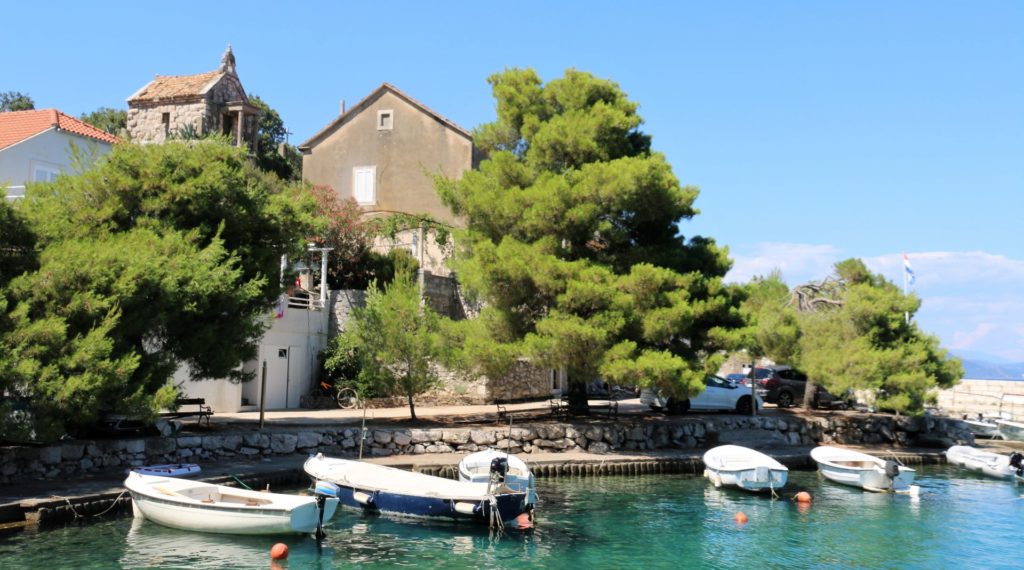 Honestly speaking, we were glad to be back safely at Kuna. We then followed the local road to Oskorušno and further to Trpanj. This former fishermen’s village has now become a holiday spot with nice beaches, but it is also well-known as a ferry port with connections to Ploče, Croatia’s mainland.
Honestly speaking, we were glad to be back safely at Kuna. We then followed the local road to Oskorušno and further to Trpanj. This former fishermen’s village has now become a holiday spot with nice beaches, but it is also well-known as a ferry port with connections to Ploče, Croatia’s mainland.
We were curious to see the well-known Divna beach and from Trpanj we followed the rural road in the direction of Duba. The views were amazing and we soon reached the Divna Bay, described in the brochures as „a great hidden place for a day trip“. But it was a surprise to see so many cars around and a lot of people at the beach, so that we could not even approach the bay! Yes, it is a fascinating place indeed, I can understand all those Polish and Czech people who decided to come here in spite of the corona crisis.
- The Western Coast
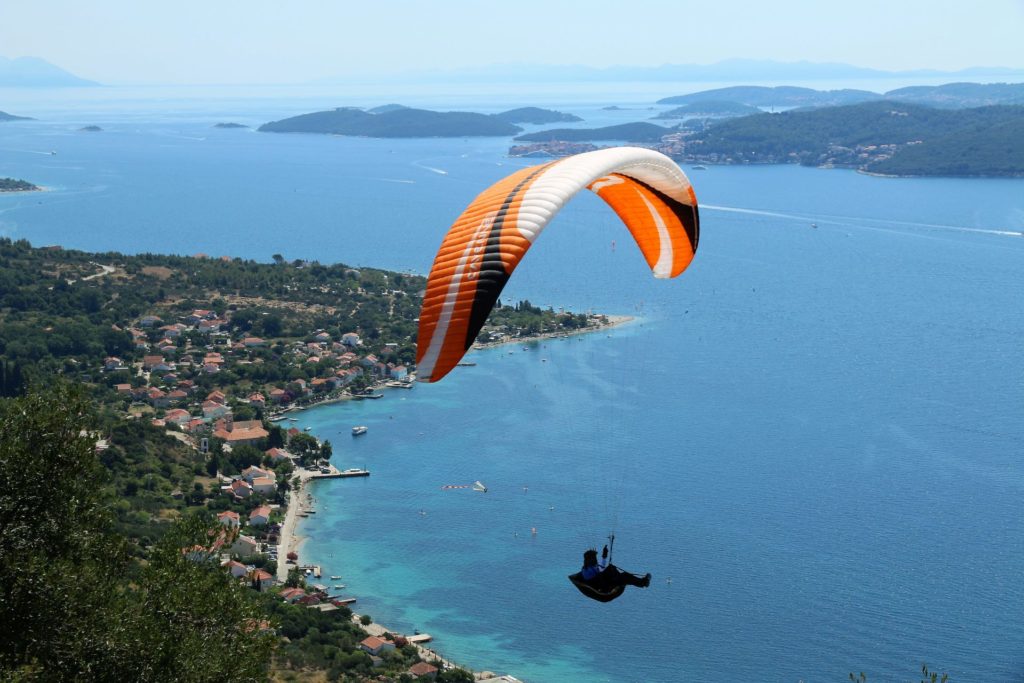 Orebić is the largest place of Pelješac Peninsula. It is an important ferry port for car ferries to Korčula. Located under Mount Sveti Ilija (961 m), it has several historic buildings and a Franciscan monastery from the 15th century. We had visited this place before and now we wanted to continue to the western point of the peninsula. We passed the village of Viganj, a well-known place for kiting and surfing, and from there a panoramic road took us uphill and further to the end of the peninsula. The view of the coast was wonderful and several paragliders had taken the opportunity to jump from the high cliffs.
Orebić is the largest place of Pelješac Peninsula. It is an important ferry port for car ferries to Korčula. Located under Mount Sveti Ilija (961 m), it has several historic buildings and a Franciscan monastery from the 15th century. We had visited this place before and now we wanted to continue to the western point of the peninsula. We passed the village of Viganj, a well-known place for kiting and surfing, and from there a panoramic road took us uphill and further to the end of the peninsula. The view of the coast was wonderful and several paragliders had taken the opportunity to jump from the high cliffs.
We finally arrived at the picturesque village of Lovište with its nice stone houses, well-known for the production of figs, almonds and carob. The village is quiet, as this is where the road stops. We had reached the end of Pelješac Peninsula.
This is not a complete picture of Pelješac. We have not visited any wineries or wine shops that can be found in each village. There are other villages like Kobaš, Hodilje, Brijesta and Prapratno. Yes, there is so much to see in this beautiful part of Croatia!
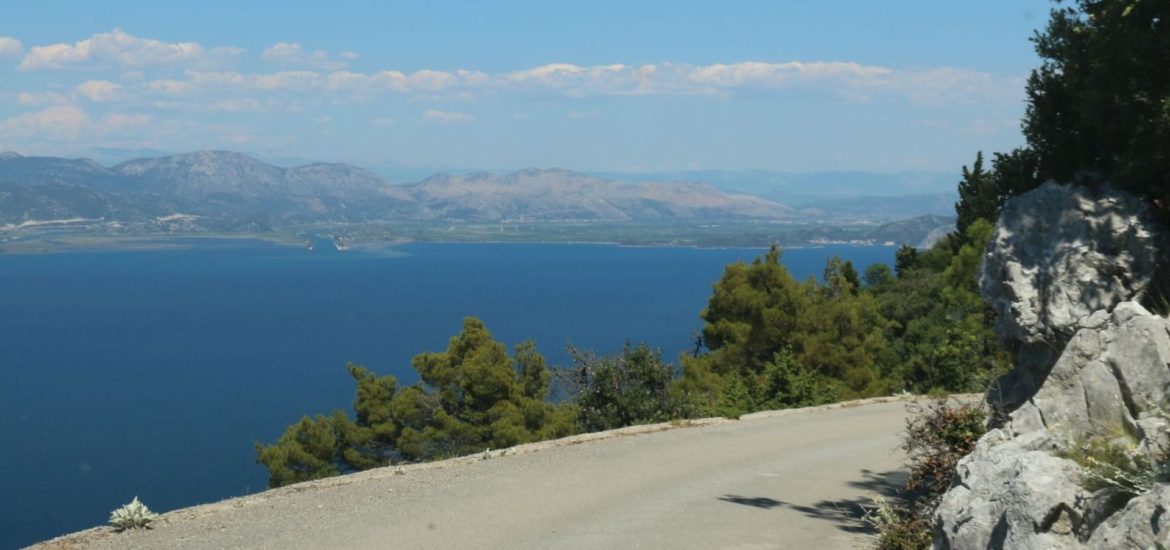
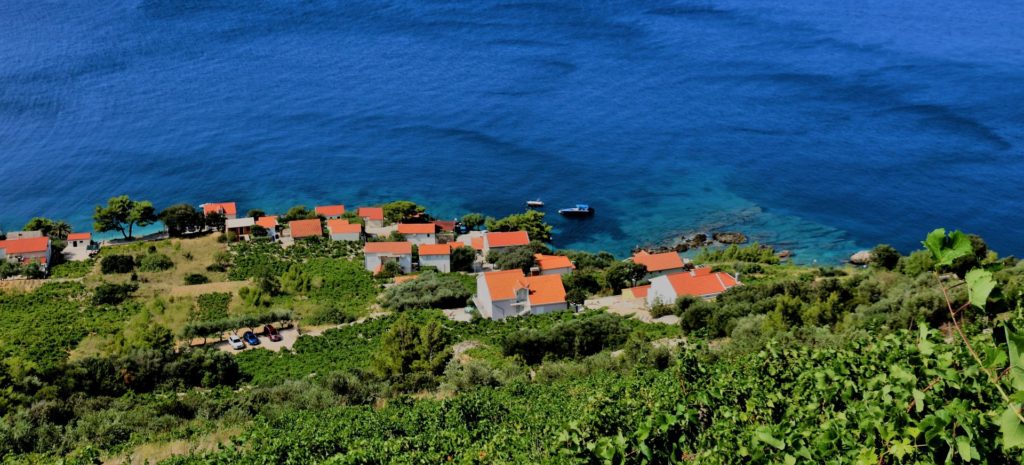
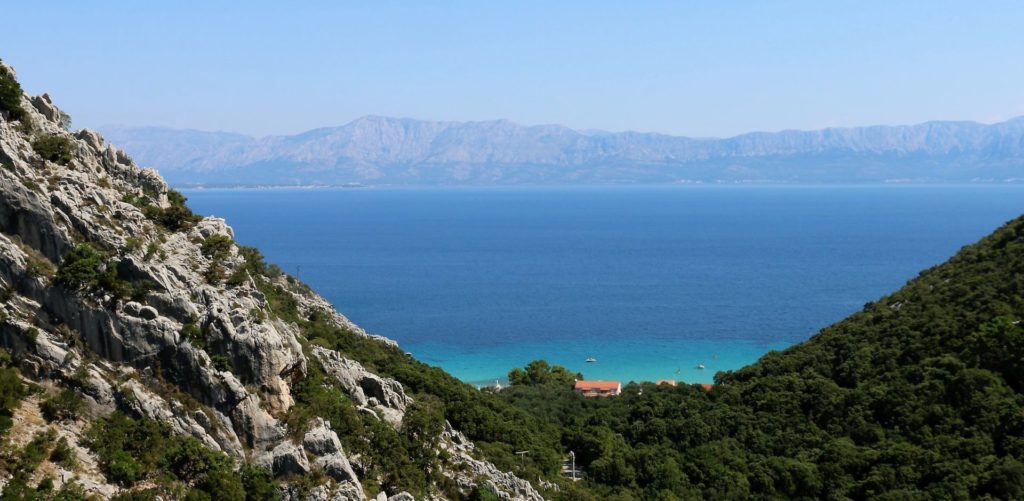
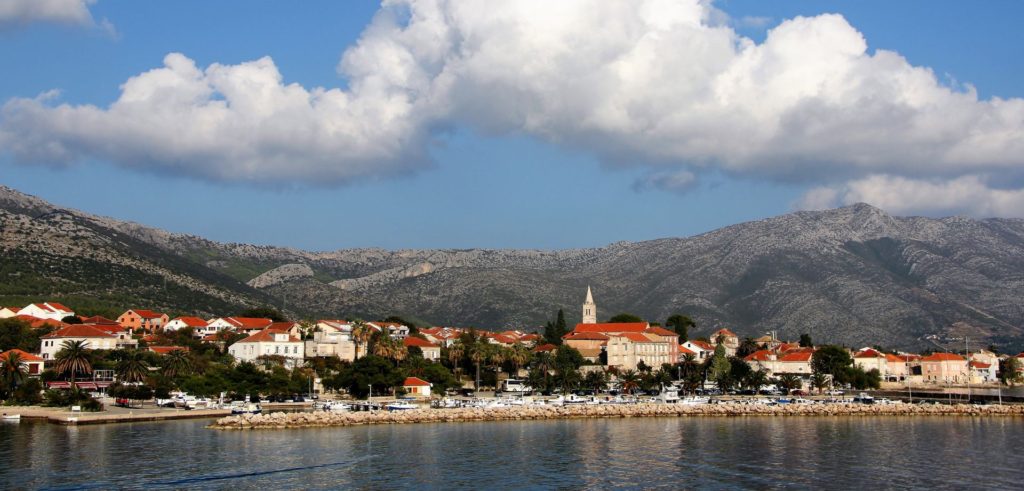
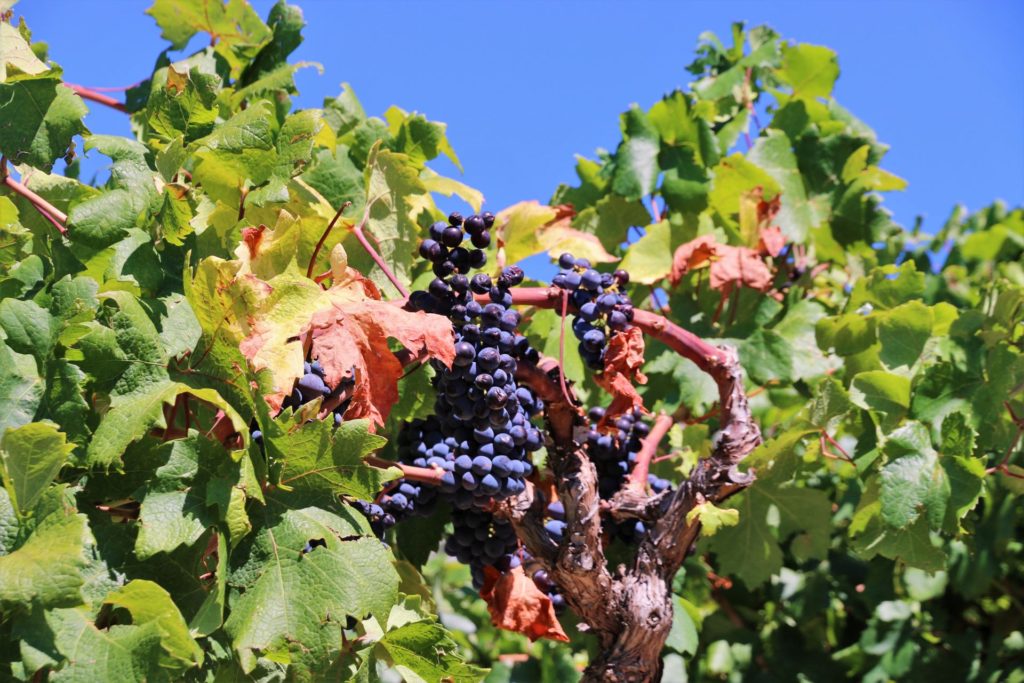
So beautiful and interesting! Lucky you – enjoy!